Climate Change | Selected Article
Double the Risk: The Exponential Rise of Threats to Human Rights by Climate Change and Infectious Diseases
The scope of the threat posed by climate change demands that we work with colleagues across policy sectors to identify new solutions.
DownloadInalienable, universal, interdependent, indivisible, equal, and nondiscriminatory. Those are the characteristics of human rights as defined in the United Nations’ Universal Declaration of Human Rights, the rights that are inherent to humans everywhere. However, multiple threats have faced human rights over the years, changing in both nature and intensity, varying from natural to man-made. Climate change is among the most significant of these threats and is the most serious “disease” Mother Earth is facing currently. As the drivers of climate change continue to progress, its impact exponentially rises as it renders humanity at risk, putting livelihoods and the protection of basic human rights in danger.
Climate change has shifted the epidemiology and incidence of infectious diseases in a multitude of ways. One is the rising incidence of climate-sensitive infectious diseases, such as malaria and dengue fever, which worsen as temperatures increase. Another is the impact of increased flooding and road blockages that prevent access to essential treatment needed for the management of chronic infectious diseases, like human immunodeficiency virus (HIV). Prolonged periods of drought catalyze the rate at which vector-borne diseases spread as mosquitos, flies, and other such transmitters of these diseases breed more readily. The West Nile virus, for example, was associated with a positive influence on the United Kingdom’s mosquito vector population following one year of drought. Other urban mosquito vectors adaptable to climate change, such as dengue and chikungunya fevers, are able to maintain their populations in the face of drought. Climate change has thus expanded the gap in access to health care, particularly for vulnerable populations such as refugees, migrant workers, and ethnic and racial minorities, in addition to populations living in low-resource settings. The baseline protection of human rights for these groups is at risk. Access to basic health care is arguably the most critical challenge such populations face. Combined with the increasing risk and impact of a rapidly changing climate and a shift in infectious-disease epidemiology, the right to an adequate standard of living as referenced in Article 25 of the Universal Declaration of Human Rights for these vulnerable populations becomes ever-more challenging to protect.
Globally, innumerable people are being detrimentally affected by a changing climate and rapidly evolving infections that converge and reinforce one another as an astronomical threat to their human rights. Often, stories that have not been given voice are lost, especially when those stories are unfolding half a world away. Following are five such narratives that shed light on the ominous relationship between climate change, infectious diseases, and human rights. While the stories are real, the names are aliases to protect the privacy of the patients.
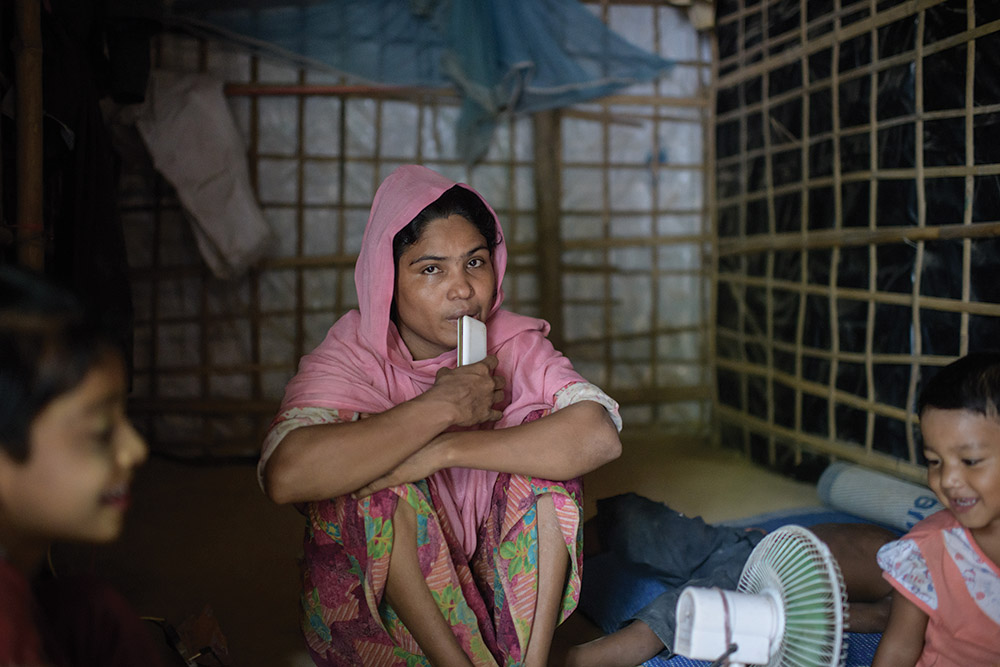
(AFP via Getty Images/Ed Jones)
Surgery for Tuberculosis in Bangladesh
Abhaya is a 44-year-old widowed mother of five children and lives in northeast Bangladesh. She works daily from 6 AM until 6 PM to ensure an adequate standard of living for her children. Recently, she started waking up in the middle of the night with fever and profuse sweating. She has been coughing blood for the past few weeks; recently, she noticed loosening of her clothes, a result of rapid weight loss. Abhaya has been diagnosed with multidrug-resistant tuberculosis (MDR TB), and after a few months of failed treatment, her physician recommended surgery to remove one of her lungs.
Abhaya had her life-saving surgery in the Central Hospital in Dhaka, unaware that her disease is partly caused by climate change or that her treatment is contributing to the same problem that made her ill.
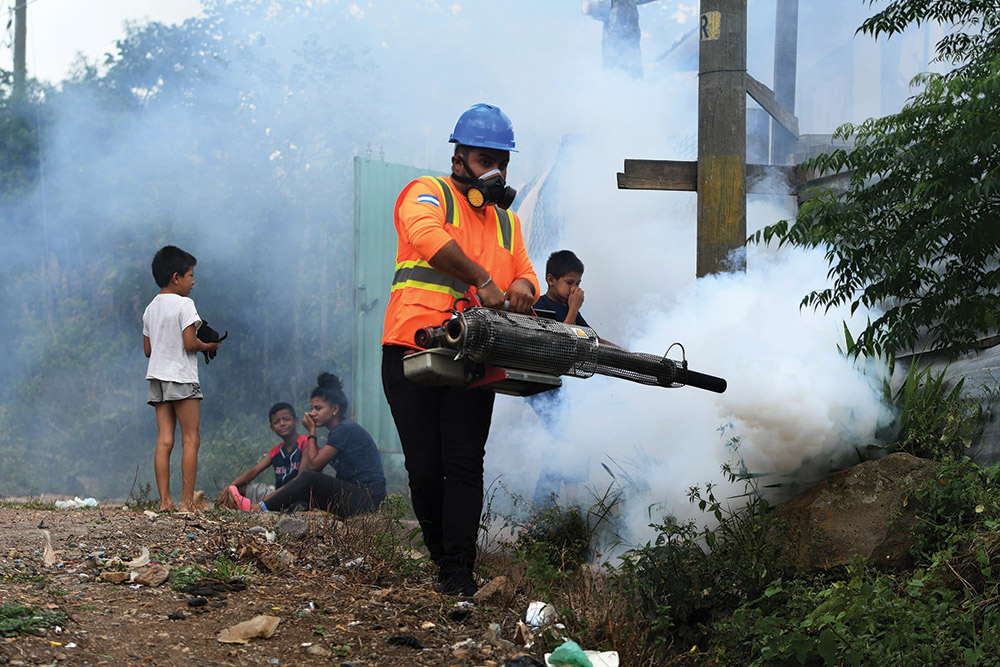
(AFP via Getty Images/Orlando Sierra)
Dengue in the Settlements of Honduras
Nadia is eight and lives in a heavily populated, low-resource settlement in Honduras. She is bright and hardworking and attends a nearby school. Recently, she started experiencing high fever, pain behind her eyes, severe headache, and joint and muscle pain. Owing to the lack of health education and the financial status of her family, she was taken to a local hospital only after her symptoms worsened and her mother started noticing rashes over her skin and blood in her vomit. She was diagnosed with complicated dengue and was immediately hospitalized. She missed three weeks of school until she recovered and could resume her education.
Dengue, a mosquito-borne infection caused by the dengue virus, is the most common arbovirus infection globally. The number of dengue cases reported to the WHO has increased more than six-fold during the last two decades, from just over 500,000 in 2000 to more than 3.3 million in 2015. The number of cases continues to rise, reaching new, previously unaffected parts of the world owing primarily to climate change.
Following a prolonged rainy season, Honduras is seeing a sharp rise in cases of dengue fever, with children particularly affected. Research indicates that the daily rainfall, mean temperature, and variation in temperature are important drivers of the current distribution and incidence of dengue. Those living in poverty and in informal settlements continue to be at a greater risk and suffer more severely because of the added barrier of limited access to health-care services and information.
Naida has almost recovered from her illness but is having a difficult time coping with the academic loss, and her family is struggling to make ends meet because of the added costs of Nadia’s care and medication. Nadia’s growth is slower than expected for her age as a consequence of complicated dengue.
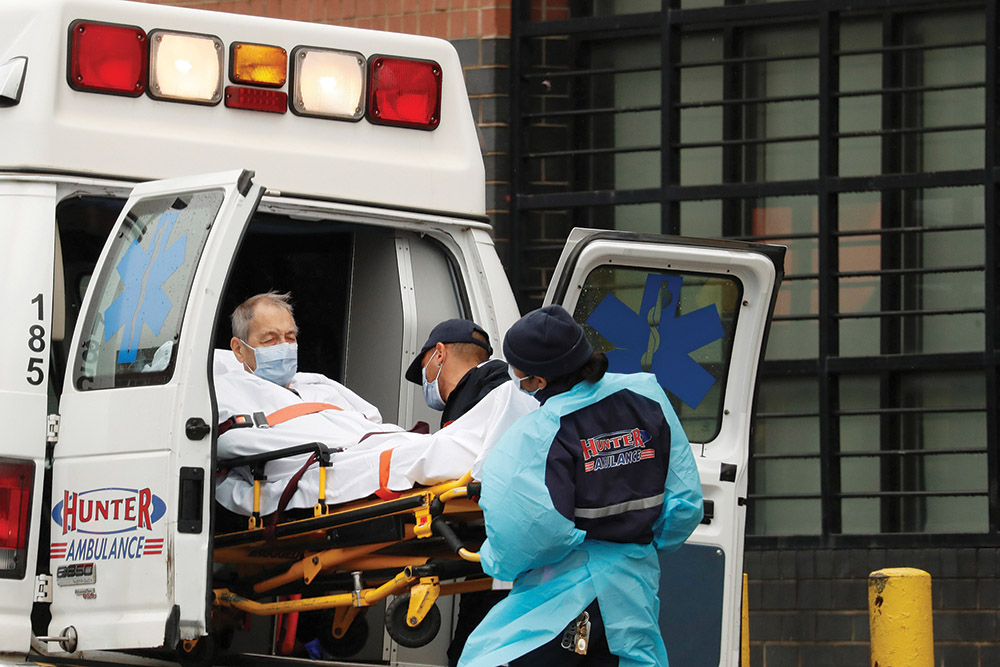
(Reuters/Lucas Jackson)
Biodiversity and COVID-19
James was 55 and lived with his wife in New York. They had returned from a long-awaited vacation to Seoul in late February. A few days after they arrived home, James developed a cough and cold. Within four days, his illness progressed to difficulty breathing, high fever, muscle pain, and weakness, and he was shifted to a tertiary care hospital. He was diagnosed with COVID-19. His symptoms progressively worsened, and he died a week later of respiratory distress.
COVID-19 is a zoonotic respiratory disease caused by the SARS-CoV-2 virus. Zoonotic diseases are infectious diseases caused by a pathogen that has “jumped” from nonhuman animals to humans. Human-induced destruction of biodiversity is not only a cause for loss of livelihoods, increased unpredictability of weather, and increased food insecurity, but is also very closely linked to zoonotic diseases. Humans venturing into closer contact with undisturbed ecosystems or disrupting these systems increases the likelihood of emergence of new zoonotic diseases. Deforestation driven by agricultural expansion, cattle breeding, meat production, mining, oil extraction, construction, rapid urbanization, and population growth is bringing people into closer and more frequent contact with animal species—making the “jump,” or their transmission to humans, easier. Production of commercial meat is not only damaging the ecosystem but, along with open-air markets at which meat is often sold, is an immeasurable hazard to human health. COVID-19, which originated in bats, was found to be first transmitted to humans through one such market in Wuhan, China.
The WHO declared COVID-19 a pandemic on March 11, 2020. The disease forced several countries to enter a period of lockdown to curb its spread, created a crisis for the global economy, and disrupted human life in unprecedented ways. Scientists studying the relationship between pathogens and epidemics know it is unlikely that COVID-19 will be the last disease brought about by the destruction of nature.
There is no doubt that the drivers of biodiversity and environmental destruction, leading to negative health impacts, are also drivers of climate change by virtue of how complex interactions between these systems take place, and there is a need to address them collectively, especially during this unprecedented year for nature and biodiversity.
James unknowingly infected his wife and 312 more people, as identified by contact tracing, before he died. His wife, who soon developed symptoms, is receiving treatment for COVID-19 at a health facility in New York.
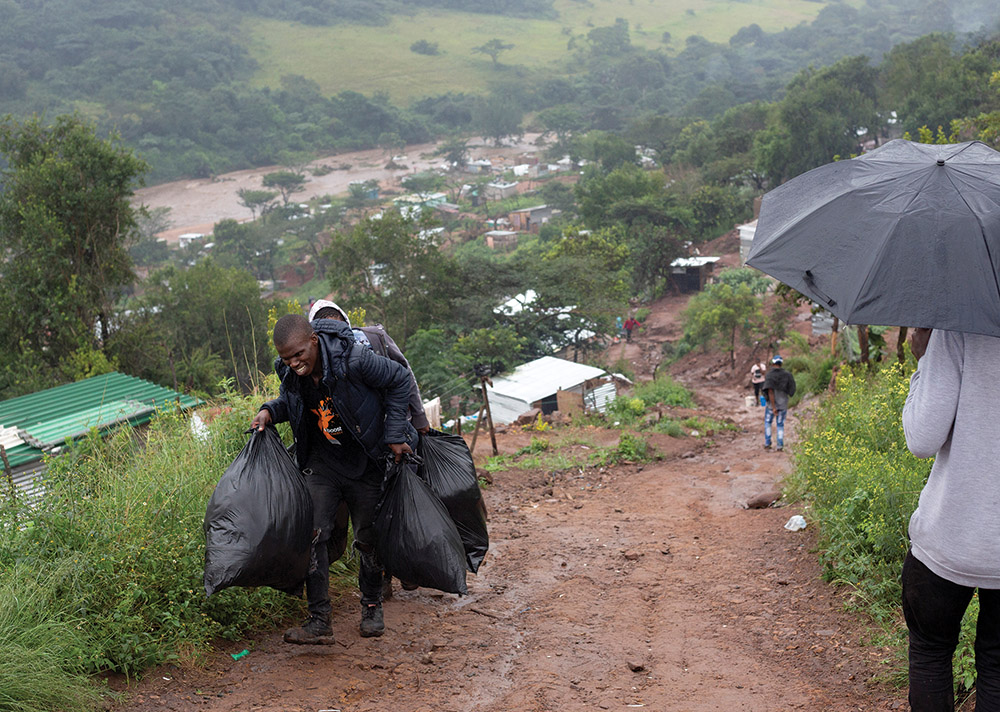
(Reuters/Rogan Ward)
HIV in the Middle East
Amela was a 34-year-old migrant worker from South Africa living in the Arabian Gulf and working as a housekeeper. After 18 months of hard work and dedication, Amela requested from her employer a doctor’s visit after experiencing a severe flu-like illness. After a ten-month delay caused by lack of attention from her employer and a prolonged period on a waiting list for the community health center designated for those in domestic help, Amela visited a physician. Several blood tests indicated a diagnosis of HIV, and Amela’s physician discussed the need to start antiretroviral therapy (ART) immediately. Amela’s employer panicked in fear for his family and opted to send her back home before she could begin an ART regimen. Back in her home country, Amela struggled to access ART during frequent periods of extreme weather and flooding caused by climate change.
Domestic workers in many parts of the Middle East are governed by the Kafala system, an exploitative sponsorship system limited to the region. Domestic workers suffer a high incidence of physical and sexual abuse and other forms of maltreatment, such as denial of access to health care. The system attempts to protect this right of access, but it is often violated by employers, delaying diagnosis and treatment. Often, workers are returned home to their native countries without being seen by a doctor. UNAIDS has reported that vulnerable populations living with HIV are particularly impacted by climate change in certain regions, such as South Africa. Areas with rising sea levels and higher sea water temperatures see an increase in the destructive capacity of floods, cyclones, and other storms. Road blockages and severe weather prevent access to essential treatment, ART in Amela’s case. ART aims to control HIV, decrease the viral load, and slow disease progression. Delaying ART allows HIV to continue to progress uncontrolled, hastening the likelihood that HIV will develop into acquired immunodeficiency syndrome (AIDS).
With help from the UNAIDS country office, Amela was eventually able to secure access to ART, but she will require frequent visits to her physician to ensure adequate control of the virus.
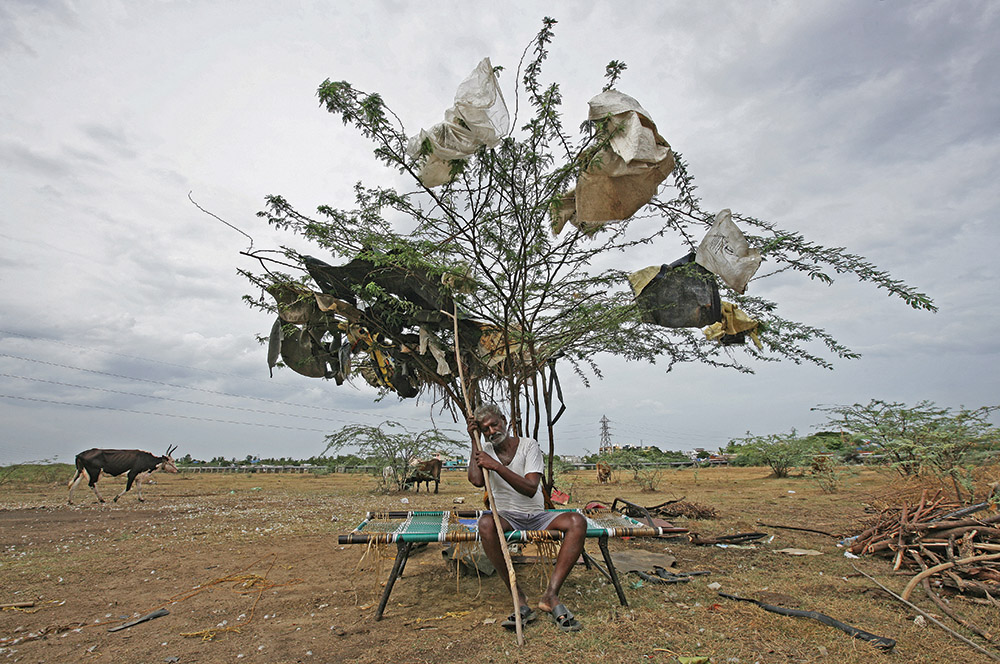
(Reuters/P. Ravikumar)
Suicide and Drought in India
Ramesh is a 37-year-old traditional farmer from Buldhana district in the Vibharba region of India. His wife is a homemaker, and together they have three children, ages 9, 12, and 14. Ramesh owns a small piece of land that he inherited from his father on which he cultivates soybeans. He leaves home at 6 AM each day to go to the field, where he spends 10 to 12 hours. He was recently diagnosed with malaria, which has been on the rise in his region, with farmers working outdoors being particularly susceptible. To his detriment, he has been struggling to grow crops on his land due to irregular rains and drought and has incurred huge debt and suffered extreme financial loss. Two farmers in his region have committed suicide after not being able to repay their debts.
India is an agrarian country with approximately 70 percent of its people depending on agriculture. More than 10,000 people involved in the farming sector committed suicide in 2018 according to the Indian National Crime Records Bureau. A vast proportion of those suicides can be attributed to financial loss resulting from untimely rainfall and prolonged periods of droughts. Lost opportunity for cultivation of crops translates to lost wages and increased debts unable to be repaid. There is a direct correlation between areas that have frequent droughts and higher rates of farmer suicide. Making matters worse, unseasonal rain has not only damaged crops but also prolonged the season for mosquito breeding, leading to a wider spread of arboviral diseases like dengue, malaria, and chikungunya fever amid a time of crisis for high-risk, vulnerable populations such as these.
With the help of the government relief scheme, Ramesh was able to procure funds to sustain the basic needs of his family and pay for his medical expenses. But he still struggles to repay a significant portion of his debt, and his attempts to grow crops on this land have been unsuccessful amid untimely rains and prolonged periods of drought. Ramesh also suffers from depression—prevalent among farmers in his region.
Conclusion
Climate change and its impacts are far reaching and affect human health and livelihoods in more ways than we fully appreciate in the course of our daily lives. While Abhaya, Nadia, James, Amela, and Ramesh lead very different lives and the illnesses they suffer from seem disparate, they have one pivotal thing in common—climate change is the underlying factor for their health conditions. Climate change poses a significant risk to human health and the spread of infectious diseases, and it disproportionately impacts the most vulnerable among us. Only with concrete, multisectoral efforts will we be able to mitigate this compounded threat to human survival and well-being.
Hiba Ghandour is a medical doctor from Lebanon and a current Research Associate at Harvard Medical School’s Program in Global Surgery. She is an aspiring cardiothoracic surgeon, and her research aims to improve access to timely, affordable, and quality surgical care in low- and middle-income countries.
Poorvaprabha Patil is a final-year medical student at Kasturba Medical College in Manipal, India. She is the Sustainable Development Goal 3 Regional Focal Point at the UN Major Group for Children and Youth and also serves as vice president of the Medical Students Association of India.
The Stanley Center is currently exploring the crossroads of climate with areas such as migration, biodiversity, international security, and public health. The authors participated in a two-day workshop the center organized with partners at the United Nations Development Programme, World Health Organization, and Wellcome Trust that sought to broaden the constituencies engaged in climate change discussions and advocacy.
Related Publications
Climate Change
Climate Change and Systemic Environmental RacismClimate Change
The Four Ds of Oil’s Just TransitionRelated Events
October 27, 2023
A Just Energy Transition for a Peaceful World: Bringing Together Climate Efforts and Pro-Diplomacy GroupsOctober 26, 2023
Policy Dinner: Bringing Cooperation on Climate Change and the Energy Transition into GeopoliticsSeptember 20, 2023
Policy Dinner: Bringing Cooperation on Climate Change and the Energy Transition into Geopolitics